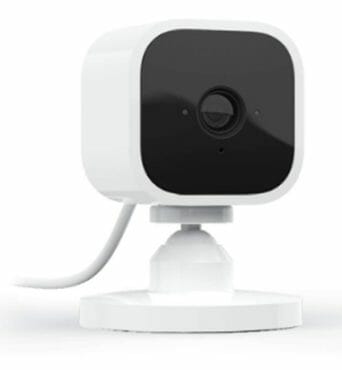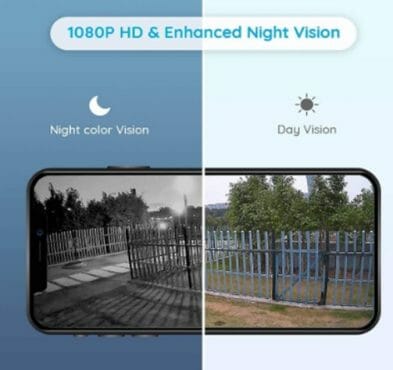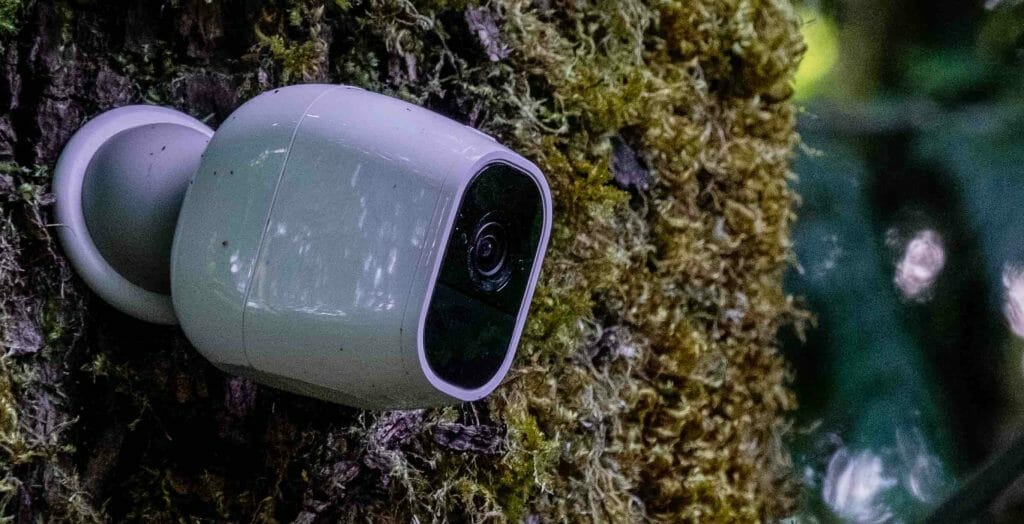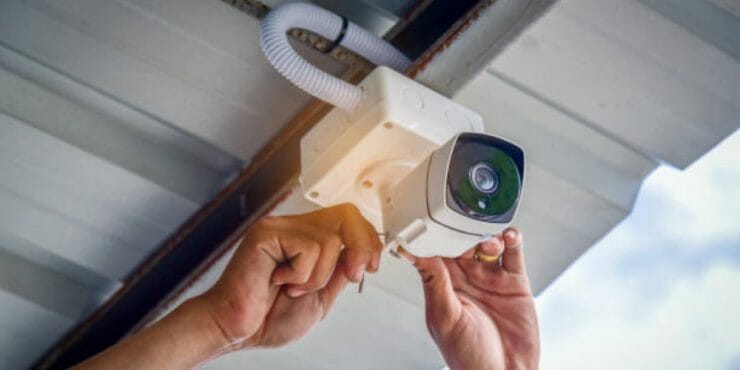Quick Navigation
Whether you’re looking to keep track of the kids, the dog, or your staff at work, a security camera is an excellent addition to any home or business. They might be a little expensive, but it’s not a place you want to skimp. Keeping an eye on your home, especially for the elderly or for parents that don’t get around as well as they used to, means security cameras can be a real lifesaver. But if you’re looking for a good place to put them and have no idea where to start, we’re here to help you.

Places to Install Security Cameras
If you ask most security camera users or professional installers where to install the cameras, they will usually point out the below-mentioned places:

Driveway
The best way to keep your home safe is to install security cameras at the driveway of your house because this will help you to identify who is approaching your home, and then you can be alerted before anyone approaches your house. This can also help you to find out if a vehicle has parked in front of your house for a long time as a suspicious activity.
The driveway is one of the most important areas of your home. It is where you park your car, and if it is not protected properly, then it might be an easy target for thieves. Not only do they help to deter crime, but they can be a way for you to keep an eye on your pets and kids, too.
It is very easy to install security cameras in the driveway of your house. All you need to do is find a good spot where there are no trees or bushes in front of it so that people can’t see what’s going on inside your house when they walk past your property line. Once done with this, just mount them up on posts and plug them into an outlet nearby so that they get power.
Indoor

Here are some of the best places to install indoor security cameras to ensure your home’s safety:
Front and Back Doors
This is obvious, but you’d be surprised how many people forget it. You don’t just want one camera close by to watch everyone who goes in and out—you want a camera that can capture faces, too. Put one at your front door, and then put another at least two feet away from the first, so you’ll have a full view of anyone’s face who comes through.
Windows
At least one camera should cover all the windows in your house, especially the one which is easily accessible from the ground level. If there are any windows that could be reached by someone jumping over a fence or breaking a window and reaching in, you should consider installing a window sensor as well as a camera.
Stairs
If you have any staircases with entry from outside (basement stairs, for example), or if your staircase is open to the main floor of your home and presents an alternate entry point, install a security camera at the top of those stairs.
Garage
Install cameras in any part of your garage that isn’t visible from inside your home—basically anywhere a thief or suspicious people could get into.
For more ideas on how to hide your indoor security camera, click here.
Outdoor

Outdoor security cameras are a great addition to any home, providing extra peace of mind for you and your family. They can also be a great deterrent for potential intruders. You can install them on the exterior or interior of your home, depending on what you want to monitor. The key is to select locations that are not already covered by other devices like CCTV cameras or motion sensors within your home.
The ideal locations for outdoor security cameras are underneath the roof and above the door, on each side of the door, and in a corner looking at the entryway from an angle.
This placement will give you a clear shot of intruders, as well as any damage they may cause to your property.
If you feel that these locations will give you an inadequate shot, you can also place cameras higher up, but keep in mind that this height may cause some distortion in the quality of the footage. Here is an additional guide on the DIY outdoor security camera housing.
Places Where Security Cameras should not be Place
While it may be a great idea to install security cameras in your home, there are some places where you should definitely not put them.
Bedrooms
The bedroom is not a place where you should install a security camera. Bedrooms are private spaces and should be treated as such. Security cameras do not belong in bedrooms.
Installing a security camera in your bedroom would be an invasion of privacy. If you want to add cameras for home security, you should put them in areas where you interact with other people and/or valuable items are stored.
Bathrooms
Burglars wouldn’t gain much from rifling through your bathroom, so there’s little risk to security if you don’t put a camera in there. Furthermore, you should not waste your camera by fitting it in the bathroom; rather, it should be used in any other important place in your house.
Other Considerations
If you’ve decided to install cameras in or around your business or home, there are a few things you should consider before making the investment. Here are some considerations you should take when thinking about installing your cameras. (1)
Visible vs Hidden
Will the cameras be visible to would-be criminals? If they can see the camera, it might deter crime, but if they know where it is, they can simply avoid it. If you don’t want people to see the camera, they may not know where to avoid it. Both options have their pros and cons. (2)
Durability
How durable do your cameras need to be? Will they be installed indoors? Outdoors? In a humid climate? In an area with extreme changes in temperature? The answers to these questions will affect how expensive your equipment needs to be.
Reflection and Glare
If a camera is installed in an area that gets a lot of direct light, its footage could be rendered unusable because of reflection and glare. Try to install your camera in an area that doesn’t get a lot of light streaming directly on it.
Total Number of Camera’s
The more cameras you need, the more expensive this project will be. Consider how many you’ll need before you buy any security system. The total number of cameras needed depends on the square footage of the space you’re monitoring, so make sure you know the dimensions of the area before you start buying and installing cameras.
Proximity to Valuable Objects
If a high-value item is near where you’re planning to put a camera, keep in mind that criminals may damage or destroy your camera in order to steal that item out of frame, which will cost you money and leave your space vulnerable to theft while you get your equipment repaired or replaced.
Out of Reach of Criminals
Make sure your security cameras are installed out of reach from criminals who might try to break into your business or home—otherwise, they may just knock them out and disable them outright!
Wrapping Up
No matter how you decide to go about selecting your security camera locations, you’ll want them to be in places that provide the best coverage for your home or business. Keep in mind that outdoor security cameras are more likely to be exposed to environmental issues like wind, rain, snow, and sun. Finding a balance between ease of installation and your particular needs will help ensure that you choose the most effective locations for your cameras.
After reading the tips and advice above, you’ve got a good idea of how to select the right location and set up your security camera. But that may not have been exactly what you were looking for, which is why we’d also like to tell you about some other things that you can consider when deciding where to put security cameras.
References
(1) investment – https://www.sec.gov/investor/pubs/tenthingstoconsider.htm
(2) deter crime – https://newsroom.unsw.edu.au/news/business-law/do-harsher-punishments-deter-crime

